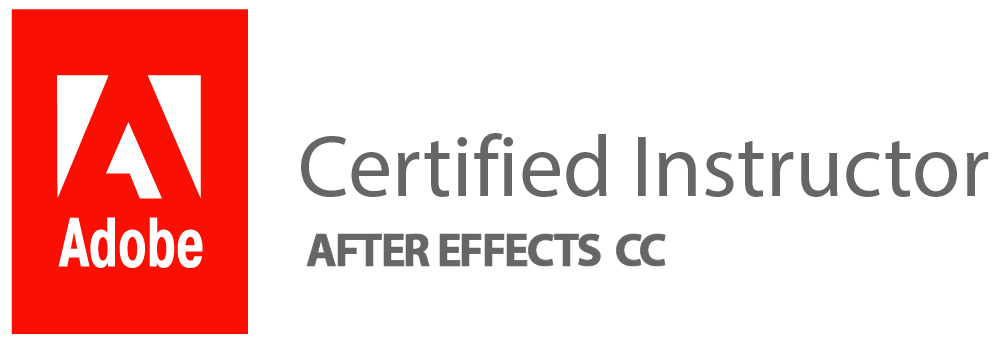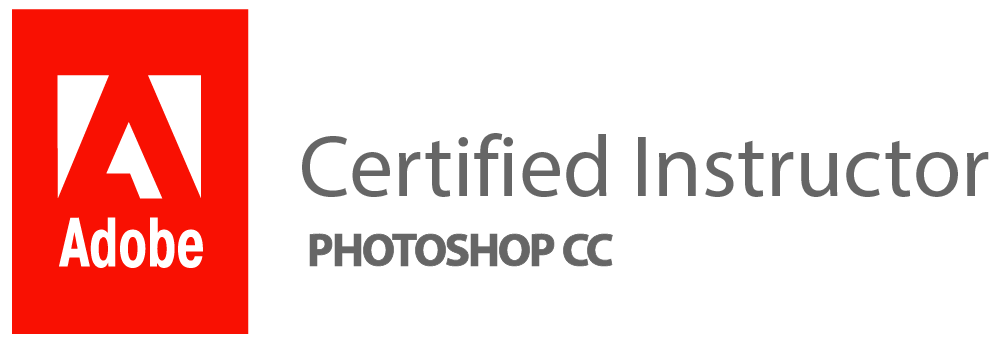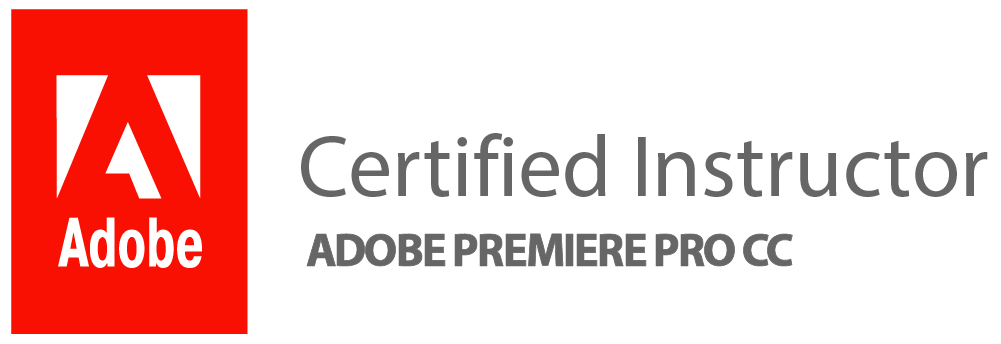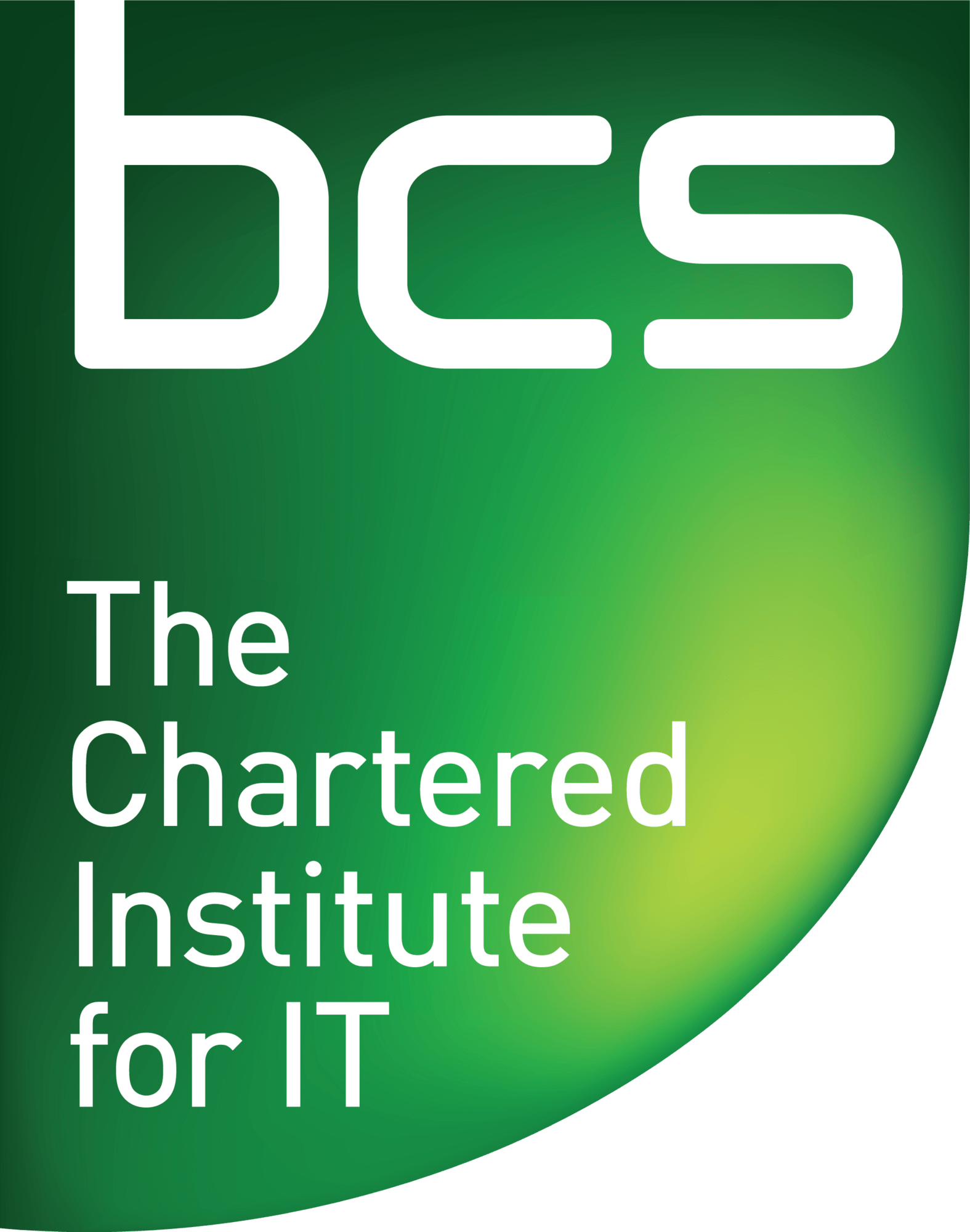How Do My Skills Compare To An Entry Level Digital Artist?
In a graphic design course, students can expect to learn a variety of skills and techniques that are essential for pursuing a career in the field. One of the key areas of focus is learning how to use design software such as Adobe Photoshop, Illustrator, and InDesign. These programs are commonly used in the industry, and mastering them is crucial for creating professional-quality designs.
Additionally, students will also learn about the principles of design, including colour theory, typography, layout composition, and visual hierarchy. Understanding these principles allows designers to create visually appealing and effective designs that effectively communicate with their intended audience.
Furthermore, a graphic design course may also cover topics such as branding and identity design, illustration techniques, web design basics, and user experience (UX) design. These topics provide students with a well-rounded understanding of different aspects of the field of graphic design and prepare them for real-world projects they may encounter in their future careers.
Basics of design principles:
In a graphic design course, one of the first things you will learn is the basics of design principles. These principles are fundamental guidelines that help designers create visually appealing and effective designs. One of the most important principles is balance, which refers to distributing visual weight evenly in a composition. This can be achieved through symmetrical or asymmetrical arrangements.
Another key principle is contrast, which involves using contrasting elements such as colour, size, or shape to create visual interest and emphasis within a design. By understanding how to effectively use contrast, designers can make certain elements stand out while maintaining overall harmony in the composition.
Additionally, graphic design courses often cover concepts like hierarchy and proportion. Hierarchy refers to organizing information in a way that guides viewers’ attention and helps them understand the importance of different elements within a design. Proportion, on the other hand, relates to how different elements relate in terms of size and scale. Understanding these principles allows designers to create balanced and visually pleasing compositions that effectively communicate their intended message.
Typography and font selection:
In a graphic design course, students will learn about typography and font selection as crucial aspects of visual communication. Typography refers to the art and technique of arranging type to make written language visually appealing and readable. It involves selecting appropriate fonts, sizes, spacing, and alignment to convey meaning effectively.
Students will be introduced to the principles of typography, such as hierarchy, legibility, readability, and contrast. They will explore different typefaces and their characteristics, including serif, sans-serif, script, and display fonts. The course may also cover topics like kerning (adjusting the space between characters), leading (the vertical space between lines of text), tracking (adjusting overall letter spacing), and other typographic techniques.
Additionally, students will learn how font selection can influence the overall mood and message of a design project. They will understand how different fonts evoke specific emotions or communicate certain brand personalities. Through hands-on exercises and projects, students will gain practical experience in applying typography principles to create effective designs that resonate with their intended audience.
Colour theory and composition:
In a graphic design course, one of the key topics that students learn about is colour theory and composition. This involves understanding how different colours interact with each other and how to use them effectively in design projects. Students are taught about the colour wheel, which is a visual representation of primary, secondary, and tertiary colours. They learn about colour harmony and how to create visually appealing combinations by using complementary or analogous colours.
Additionally, students are introduced to the concept of composition in graphic design. Composition refers to the arrangement of elements within a design layout. Students learn about principles such as balance, symmetry, asymmetry, and proportionality in order to create aesthetically pleasing compositions. They also explore techniques for directing the viewer’s attention through the use of hierarchy and focal points.
By acquiring knowledge in colour theory and composition during a graphic design course, students gain essential skills that enable them to effectively communicate ideas through visuals. These skills empower them to create visually impactful designs that not only attract attention but also convey messages effectively for various purposes, such as advertising campaigns, branding materials, websites, or social media graphics.
Software and technical skills:
In a graphic design course, you will learn a variety of software and technical skills that are essential for creating visually appealing designs. One of the key software skills you will acquire is proficiency in Adobe Creative Suite, which includes programs like Photoshop, Illustrator, and InDesign. These tools are widely used in the industry and will enable you to edit images, create illustrations and layout designs for various mediums such as print or web.
Additionally, you will develop technical skills related to typography, colour theory, and composition. Understanding how to select appropriate fonts for different projects is crucial in creating effective designs that convey the desired message. Similarly, learning about colour theory will enable you to choose harmonious colour schemes that evoke specific emotions or moods in your designs. Moreover, understanding composition principles such as balance, alignment, and visual hierarchy will help you create well-structured layouts that guide viewers’ attention.
Overall, a graphic design course equips students with both the software knowledge and technical expertise necessary for success in this creative field. By mastering these skills, aspiring designers can effectively translate their ideas into visually appealing creations that engage audiences across various platforms.
Project-based learning and portfolio building:
In a graphic design course, students learn a wide range of skills and techniques necessary for creating visually appealing and effective designs. They start by gaining an understanding of the fundamental principles of design, such as colour theory, typography, composition, and layout. They also learn how to use various software tools commonly used in the industry, including Adobe Photoshop, Illustrator, and InDesign.
Additionally, students are taught how to conduct research and gather inspiration for their projects. They learn about different design styles and trends throughout history and explore how to apply these concepts in their own work. Students also delve into the world of branding and marketing, learning how to create visuals that effectively communicate a message or represent a brand’s identity.
Throughout the course, students engage in project-based learning, where they apply their knowledge and skills to real-world scenarios. This practical approach allows them to gain hands-on experience working on various design projects such as creating logos, posters, websites, packaging designs, or even animation. These projects serve as valuable portfolio pieces that showcase their abilities upon completion of the course.
Graphic Designer
In a graphic design course, students learn various technical skills and software programs that are essential for the field. They learn how to use industry-standard software like Adobe Photoshop, Illustrator, and InDesign to create visually appealing designs. These programs help them manipulate images, create illustrations, and design layouts for print or digital media.
Additionally, students in a graphic design course also learn about the principles of design, such as composition, colour theory, typography, and visual hierarchy. They understand how different elements of design work together to communicate a message effectively. Through hands-on projects and assignments, they gain practical experience in applying these principles to create compelling visuals.
Besides technical skills and design principles, a graphic design course also focuses on developing critical thinking and problem-solving abilities. Students are encouraged to think creatively and find innovative solutions for various design challenges. They learn how to brainstorm ideas, conduct research for inspiration, analyze client briefs or project requirements, and conceptualize unique designs that meet specific objectives.
Overall, a graphic design course equips students with both the technical know-how and creative thinking skills necessary for success in this competitive industry.
Graphic Designer & Brand Designer
In a graphic design course, aspiring designers learn the fundamental principles of design and how to apply them to various projects. They delve into topics such as colour theory, typography, layout composition, and visual hierarchy. Students also explore different software tools and techniques used in the industry, including Adobe Photoshop, Illustrator, and InDesign.
Additionally, students are taught the importance of understanding target audiences and creating designs that effectively communicate messages to specific demographics. They learn how to conduct research and gather inspiration for their designs while also developing critical thinking skills to analyze their work objectively.
Moreover, a graphic design course often includes hands-on projects where students can apply what they have learned. These assignments range from creating logos and brand identities to designing marketing materials like brochures or websites. Throughout these projects, students receive feedback from instructors and peers that helps them refine their skills and improve their understanding of design principles. Overall, a graphic design course provides a comprehensive education in both technical skills and creative concepts necessary for success in this field.
Brand Designer & Illustrator
In a graphic design course, aspiring brand designers and illustrators gain a strong foundation in visual communication and design principles. They learn about the elements of design, such as colour theory, typography, composition, and layout. Students also develop skills in digital software tools like Adobe Photoshop and Illustrator to create and manipulate images.
Additionally, graphic design courses teach students how to conduct thorough research and gather inspiration for their designs. They learn how to analyze target audiences and create designs that effectively communicate the desired message to those audiences. Students are also taught about branding strategies and how to create cohesive visual identities that align with a company’s values.
Furthermore, a graphic design course provides hands-on experience through various assignments and projects. Students are encouraged to explore their creativity while adhering to design briefs or client requirements. They also learn about the importance of collaboration in the industry by participating in group projects or working with clients directly. Overall, a graphic design course equips individuals with the necessary skills and knowledge to pursue careers as brand designers or illustrators in various industries such as advertising, marketing, publishing, or freelance work.
What Are The Most Common Mistakes & How Can You Avoid Them When Working On A Graphic Design Project?
In a graphic design course, you will learn various skills and techniques that are essential for creating visually appealing designs. These courses typically cover topics such as colour theory, typography, layout design, image editing software proficiency (such as Adobe Photoshop or Illustrator), and understanding the principles of design. Additionally, you will also gain knowledge about different design styles and trends.
One of the most important things you will learn in a graphic design course is how to effectively communicate ideas through visual elements. You will learn how to convey messages using images, colours, fonts, and other design elements to create visually engaging designs that capture attention. Furthermore, you will develop problem-solving skills by learning how to analyze client briefs and transform them into creative solutions.
Graphic design courses also emphasize the importance of time management and meeting deadlines. You will learn how to manage your time efficiently while working on multiple projects simultaneously. This includes setting priorities, planning tasks, organizing resources effectively, and delivering high-quality work within specified timeframes.
Overall, a graphic design course provides a comprehensive education on various aspects of visual communication and equips students with the necessary skills to succeed in the industry. It combines theoretical knowledge with practical application through hands-on projects and assignments that allow students to showcase their creativity while developing their technical abilities.
What Will You Study At Our Graphic Design School?
In our graphic design school, you will have the opportunity to learn a wide range of skills and techniques that are essential for a successful career in the field. Our curriculum covers both traditional and digital design methods, giving you a well-rounded education that prepares you for any design project. You will learn how to use industry-standard software such as Adobe Photoshop, Illustrator, and InDesign, allowing you to create professional-quality designs.
Throughout the course, you will also develop your creative thinking and problem-solving abilities. We believe that good design is not just about aesthetics but also about effectively communicating a message or solving a problem. You will learn how to analyze client briefs, conduct research, and come up with innovative solutions that meet their needs. Additionally, our program emphasizes the importance of collaboration and teamwork by providing opportunities for group projects where you can practice working in a team environment.
Our graphic design course also includes practical modules on branding and marketing. These topics are crucial for anyone looking to work as a graphic designer in today’s competitive market. You will learn about brand identity development, creating logos, designing marketing materials such as brochures and flyers, and understanding visual communication strategies. By the end of the program, you will have developed a diverse portfolio showcasing your skills across various design disciplines – from print to digital media – making you ready to enter the industry with confidence.
What Do Designers Need To Consider To Use Colour Successfully?
In a graphic design course, designers learn the importance of colour theory and how to effectively use colour in their designs. One crucial consideration that designers need to make when using colour is understanding the psychological impact that different colours can have on viewers. For example, warm colours like red and orange are often associated with energy and excitement, while cool colours like blue and green evoke feelings of calmness and tranquillity. Designers must consider their target audience and the emotions they want to elicit when selecting colours for their designs.
Another factor that designers need to consider when using colour successfully is creating a harmonious colour scheme. This involves choosing colours that work well together and creating a visually pleasing composition. Designers may use various techniques, such as complementary or analogous colour schemes, to achieve this harmony. They must also take into account factors such as contrast, saturation, and brightness levels to ensure legibility and visual appeal in their designs.
Overall, designers need to consider both the emotional impact of different colours and the creation of harmonious colour schemes in order to successfully use colour in their designs. By understanding these principles taught in graphic design courses, designers can create visually engaging works that effectively communicate messages to their intended audiences.
Digital Artist
In a graphic design course, aspiring digital artists learn a plethora of skills and techniques that are essential for their careers. These courses typically cover the fundamentals of graphic design, including principles such as colour theory, composition, typography, and layout. Students gain knowledge about various software programs like Adobe Photoshop, Illustrator, and InDesign that are widely used in the industry.
Moreover, students are taught how to conceptualize ideas and transform them into visually appealing designs. They delve into the world of visual communication and learn how to effectively convey messages through images and graphics. Additionally, they develop skills in creating logos, illustrations, posters, banners, and other marketing materials.
Besides technical skills development, graphic design courses also emphasize critical thinking abilities. Students learn to analyze client briefs or project requirements and come up with creative solutions that meet the objectives while considering factors such as target audience demographics and brand identity. Furthermore, they develop strong communication skills through presentations where they explain their design choices and receive feedback from peers or instructors.
How Do Graphic Designers Select The Right Colours For A Project?
In a graphic design course, students learn about the various aspects of colour theory and how to apply it to their projects. They study the psychological effects of different colours and understand how they can evoke certain emotions or convey specific messages. Additionally, they learn about colour harmonies and how to create visually pleasing combinations by using techniques such as complementary, analogous, or triadic colour schemes.
Students also delve into the technical side of selecting colours for a project. They explore colour systems such as RGB (Red, Green, Blue) and CMYK (Cyan, Magenta, Yellow, Key), understanding their differences and when to use each one. Furthermore, they learn about colour swatches and palettes that are available in design software programs like Adobe Photoshop or Illustrator.
Overall, a graphic design course equips students with the knowledge and skills needed to make informed decisions when selecting colours for any given project. It provides them with a solid foundation in both theoretical concepts and practical applications of colour selection in graphic design.
How Do Colour Schemes Affect Branding And Identity Design?
In a graphic design course, one of the key concepts that students learn is how colour schemes can significantly impact branding and identity design. Colour plays a crucial role in creating a visual identity for a brand and helps to communicate its personality, values, and message to the target audience. Different colours evoke different emotions and can influence how consumers perceive a brand.
Understanding colour theory and psychology is essential in order to create effective designs that resonate with the intended audience. Students learn about various colour combinations, such as complementary, analogous, monochromatic, and triadic schemes and how each scheme can evoke specific feelings or associations. They also explore the use of colour in different cultural contexts, as colours may have different meanings across cultures.
Moreover, students are taught about the importance of consistency in using colour throughout all brand materials to establish recognition and recall. They learn how to select appropriate colours for logos, typography, packaging designs, websites, and other marketing collateral while considering factors like contrast, readability, and accessibility for people with visual impairments. Overall knowledge of colour schemes equips graphic design students with the skills necessary to effectively convey a brand’s message visually through impactful branding and identity design solutions.
Graphic Design And The Connection To The World Of Advertising
In a graphic design course, you will learn the fundamental principles and elements of design, such as colour theory, typography, layout composition, and visual hierarchy. These skills are essential in creating visually appealing and effective designs for advertising purposes. You will also learn how to use various design software tools like Adobe Photoshop, Illustrator, and InDesign to bring your ideas to life.
Furthermore, a graphic design course will teach you about the importance of understanding your target audience and how to create designs that resonate with them. This is particularly relevant in the world of advertising as ads need to grab attention and communicate a message quickly. You will also learn about branding strategies and how visuals can play a crucial role in building brand identity in advertisements.
Overall, graphic design courses provide students with the necessary technical skills and creative thinking required to excel in the world of advertising by creating impactful visual designs that effectively convey messages to consumers.
Printing And Graphic Design
In a graphic design course, you will learn the fundamental principles of design and how to apply them to various mediums. This includes learning about colour theory, typography, composition, and layout. You will also be introduced to software tools such as Adobe Photoshop, Illustrator, and InDesign, which are commonly used in the industry for creating digital designs.
Additionally, you will gain an understanding of the design process from concept development to final execution. This involves conducting research and gathering inspiration, brainstorming ideas, sketching concepts, refining designs through iterations, and ultimately presenting a finished product that effectively communicates a message or fulfils a specific purpose.
Furthermore, a graphic design course typically covers printing techniques and processes. Understanding print production is crucial as it helps designers optimize their work for different types of print media, such as brochures, flyers, posters or business cards. Topics like file formats suitable for printing (such as PDF), resolution requirements for high-quality prints (typically 300 dpi), and colour management are usually covered in detail. Learning these aspects of printing and graphic design, together with other key skills mentioned earlier in this subtopic, allows students to develop the well-rounded expertise necessary for success in the field.
What Is The Difference Between Graphic And Digital Design?
In a graphic design course, students learn various skills and techniques related to visual communication. They are taught how to create designs for print media such as posters, brochures, and advertisements using traditional art tools like pencils, markers, and paints. Students also gain knowledge about typography, colour theory, composition, and layout principles.
Moreover, in a graphic design course, students are introduced to software applications like Adobe Photoshop and Illustrator that enable them to create digital designs. They learn how to manipulate images and typography digitally using these tools. Additionally, they explore the basics of web design by understanding user interface (UI) principles and creating website mock-ups.
Throughout the course, students are encouraged to develop their creativity while also honing their technical skills. By the end of the program, they should be able to conceptualize and execute visually appealing designs for both print and digital media.
Design Thinking & Graphic Design Rules
In a graphic design course, you will learn various aspects of design thinking and the rules that govern graphic design. Design thinking is a problem-solving approach that focuses on understanding the needs and desires of the target audience and creating effective solutions to address those needs. It involves empathizing with the users, defining the problem, ideating and brainstorming potential solutions, prototyping those ideas, and testing them to gather feedback for improvements.
Graphic design rules are guidelines that help designers create visually appealing and effective designs. These rules cover elements such as colour theory, typography, composition, balance, hierarchy, contrast, and spacing. Understanding these rules is essential for creating designs that communicate effectively while also being aesthetically pleasing. By learning these rules in a graphic design course, students develop a foundation in visual communication principles that can be applied across different mediums like print media or digital platforms.
Visual Language & Concept
In a graphic design course, you will learn about the importance of visual language and concepts in design. Visual language refers to the use of visual elements such as colour, typography, images, and layout to communicate a message or evoke certain emotions. It is essential for designers to understand how these elements work together to effectively convey their intended meaning.
Concept development is another crucial aspect taught in graphic design courses. Students are encouraged to think critically and creatively to develop unique and innovative ideas for their designs. They learn techniques for brainstorming, sketching, and refining concepts until they have a strong foundation for their final design.
By understanding visual language and concept development, students can create designs that are not only visually appealing but also meaningful and impactful. These skills enable them to effectively communicate messages and connect with their target audience through their designs.
Composition, Hierarchy, Colour Theory, Ideas
In a graphic design course, students learn various essential elements and principles that are crucial in creating visually appealing and effective designs. One of these elements is composition, which involves arranging visual elements in a way that creates balance, unity, and harmony. Students learn about different techniques, such as the rule of thirds, framing, and focal points, to create engaging compositions.
Another important aspect taught in graphic design courses is hierarchy. Hierarchy refers to the organization of information based on its importance or significance. Students learn how to prioritize content through the use of typography, colour contrast, size variations, and positioning to guide viewers’ attention and improve readability.
Colour theory is also extensively covered in graphic design courses. Students explore concepts such as colour harmony, contrast, saturation levels, and emotional responses associated with different colours. Understanding colour theory enables designers to effectively convey messages and evoke specific emotions through their work.
Lastly, students are encouraged to develop creative thinking skills by generating innovative ideas for their designs. They learn brainstorming techniques to come up with unique concepts that effectively communicate the desired message or story. The ability to think critically and outside the box is highly valued in the field of graphic design as it allows designers to produce original and impactful work.
Thinking Outside The Box
In a graphic design course, one of the key skills that students acquire is thinking outside the box. This involves challenging conventional ideas and pushing the boundaries to create innovative and unique designs. By exploring different perspectives and experimenting with various techniques, students learn how to approach design problems from fresh angles.
Thinking outside the box in graphic design also means being open to unconventional sources of inspiration. Students are encouraged to draw inspiration from diverse fields such as nature, architecture, literature, and even technology. By doing so, they can bring a fresh perspective to their designs and stand out in a competitive industry.
Moreover, thinking outside the box in graphic design involves breaking free from traditional design constraints. Students are taught to question norms and conventions in order to create designs that are not only visually appealing but also functional and user-friendly. They learn how to experiment with layout, colour schemes, typography choices, and other elements of design to create unique solutions for clients’ needs. Ultimately, thinking outside the box allows graphic designers to push their creative limits and deliver designs that leave a lasting impact on viewers.
How Does Good Design Affect Customer Conversion Rates?
In a graphic design course, students learn a variety of skills and techniques that are essential for creating effective designs. They learn about the principles of design, such as balance, proportion, and hierarchy, which help them create visually appealing layouts. Students also learn how to use various design software programs, such as Adobe Photoshop and Illustrator, to create digital artwork and manipulate images.
Additionally, students in a graphic design course learn about typography and how to select fonts that enhance the overall design. They study colour theory and learn how different colours can evoke different emotions or convey specific messages. Students also gain an understanding of composition and layout, including how to arrange elements on a page for maximum impact.
Overall, a graphic design course teaches students both the technical skills necessary for creating visually stunning designs and the theoretical knowledge needed to create designs that effectively communicate messages to their intended audience.
How Important Is It To Have A User-Friendly Interface When Designing A Website?
In a graphic design course, students learn various aspects of designing for both print and digital mediums. One important aspect covered in these courses is the importance of creating a user-friendly interface when designing websites. A user-friendly interface is crucial as it directly impacts the overall user experience and determines whether users will stay on the website or abandon it. Students learn how to create intuitive navigation menus, use clear typography, and establish a consistent visual hierarchy to guide users through the website easily.
Moreover, a user-friendly interface also plays a significant role in enhancing accessibility for all users. Designers are taught about inclusive design principles that enable them to create interfaces that cater to different abilities and disabilities. This includes considerations such as providing alternative text for images, using colour contrast effectively, and ensuring compatibility with screen readers. By understanding these concepts, students gain knowledge on how to design websites that are not only aesthetically pleasing but also functional and accessible to all users.
Overall, by emphasizing the importance of a user-friendly interface in web design courses, students are equipped with the skills necessary to create engaging websites that prioritize usability and accessibility. Understanding the significance of this aspect allows designers to develop websites that effectively communicate information while providing an enjoyable browsing experience for all users.
UX UI (User Experience & User Interface)
In a graphic design course, you will learn the foundations of UX UI (User Experience and User Interface) design. This involves understanding how to create visually appealing and intuitive designs for digital interfaces such as websites, mobile applications, and software. You will learn about the principles of user-centred design, which focuses on crafting experiences that meet the needs and goals of the end-users.
Additionally, you will gain knowledge about conducting user research to gather insights into user behaviour and preferences. This includes techniques like surveys, interviews, and usability testing to understand how users interact with a design and identify any areas for improvement. You will also learn how to create wireframes and prototypes to visualize your designs before implementation.
Furthermore, a graphic design course may cover topics related to typography, colour theory, layout composition, and visual hierarchy. These elements are crucial in creating aesthetically pleasing interfaces that effectively communicate information to users. Overall, a graphic design course equips you with the skills necessary for designing engaging digital experiences that prioritize usability and aesthetics.
Adobe Photoshop & Adobe Illustrator & Adobe Indesign
In a graphic design course, you will learn how to effectively use Adobe Photoshop, Adobe Illustrator, and Adobe InDesign. These three software programs are essential tools for any graphic designer.
Firstly, Adobe Photoshop is primarily used for editing and manipulating photographs or images. It allows you to retouch photos, remove imperfections, adjust colours and contrast, as well as create digital artwork from scratch. You will learn how to use various tools such as brushes, layers, masks, and filters to enhance images and create stunning visual effects.
Secondly, Adobe Illustrator is the go-to program for creating vector graphics. It enables you to design logos, illustrations, icons, and typography elements that can be scaled without losing quality. Throughout the course, you will become familiar with using different shapes, paths, and anchor points and applying fills and strokes to create visually appealing vector artwork.
Last but not least important in a graphic design course is learning Adobe InDesign, which specializes in layout design for print or digital projects such as magazines., brochures or ebooks. With InDesign, students can combine text and images into cohesive layouts by utilizing features like master pages, stylesheets, and grid systems. They will also gain knowledge on how to apply typography principles such as kerning, leading tracking and choosing appropriate fonts and colour schemes. Moreover, they will be able to learn to export their projects in various formats suitable for print or digital media.
Build Websites: Figma, WordPress, Elementor.
In a graphic design course, students learn various skills and techniques related to creating visual content. One of the important aspects covered in the course is website design. Students are taught how to build websites using different tools and platforms such as Figma, WordPress, and Elementor.
Figma is a popular web-based design tool that allows designers to create interactive prototypes and collaborate with team members in real time. Students learn how to use Figma’s features for designing and prototyping websites, creating responsive layouts, and optimizing user experience.
WordPress is another widely used platform for building websites. In the graphic design course, students learn how to set up a WordPress site, customize themes, add plugins for enhanced functionality, create pages and blog posts, optimize content for search engines (SEO), and manage website updates.
Elementor is a drag-and-drop page builder plugin for WordPress that enables users to design stunning web pages without any coding knowledge. In the graphic design course, students are introduced to Elementor’s intuitive interface and its powerful features like pre-designed templates, widgets library, responsive editing options, and animation effects integration with other plugins or services such as WooCommerce.
By learning these tools in their graphic design course curriculum, students gain practical skills that can be applied when building professional websites for clients or personal projects. These tools provide flexibility and efficiency in the website creation process while ensuring visually appealing designs with optimal user experience.
High Demand
In a graphic design course, students learn a wide range of skills and techniques that are essential for success in the industry. One of the key things they learn is how to use design software such as Adobe Photoshop, Illustrator, and InDesign. These programs are widely used in the field of graphic design, and having a strong understanding of them is crucial. Students also learn about colour theory, typography, layout design, and composition. They explore different styles and trends in graphic design and gain an understanding of how to create visually appealing designs that effectively communicate a message.
Additionally, students in a graphic design course learn about branding and logo design. They study the principles behind creating memorable logos that accurately represent a brand’s identity. This includes learning about colour psychology and how different colours evoke certain emotions or associations. Students also learn about typography choices for logos and how to create unique and recognizable designs.
Another important aspect of a graphic design course is learning about print production. Students gain knowledge of different printing techniques, materials, finishes, and file formats required for printing projects. They understand the importance of designing with print specifications in mind to ensure high-quality results.
Overall, a graphic design course provides students with the necessary skills to succeed in this high-demand industry by equipping them with technical expertise as well as creative problem-solving abilities needed to create visually compelling designs that meet clients’ needs.
Multimedia & Interactive Media
In a graphic design course, students can expect to learn a wide range of skills and techniques related to multimedia and interactive media. This includes learning how to create and manipulate various types of digital content, such as images, videos, animations, and audio files. Students will also gain an understanding of the principles of effective visual communication, including layout design, typography, colour theory, and composition.
Additionally, students will be introduced to various software tools commonly used in the industry, such as Adobe Photoshop, Illustrator, InDesign, and Premiere Pro. They will learn how to use these tools effectively for designing graphics for print and web-based platforms. Moreover, students will explore the concepts behind interactive media design and develop skills in creating user-friendly interfaces for websites or mobile applications.
Overall, a graphic design course provides students with a solid foundation in multimedia and interactive media by teaching them essential technical skills as well as creative problem-solving strategies. Through hands-on projects and assignments that simulate real-world scenarios, students are encouraged to think critically about their designs while also honing their artistic abilities. By the end of the course, they should have gained the necessary knowledge and practical experience needed to pursue careers in graphic design or related fields.
Motion Graphics & After Effects
In a graphic design course, students can expect to learn various aspects related to motion graphics and After Effects. Motion graphics is the art of using animation and visual effects to create engaging and dynamic content. It involves bringing static designs to life through movement, often used in advertisements, title sequences, and explainer videos. Students will develop skills in creating visually appealing animations, understanding the principles of timing and pacing, and effectively communicating messages through motion.
After Effects is a powerful software commonly used in the industry for creating motion graphics; in a graphic design course, students will gain hands-on experience with this software, learning how to navigate its interface, use its tools and features efficiently, and create professional-quality animations. They will explore techniques such as keyframing (setting specific points in time for objects or properties), applying effects to enhance visuals, compositing (combining multiple elements into one scene), working with layers for organization purposes, adding text or typography animations, utilizing masking techniques for selective rendering effects or transitions between scenes.
Overall, a graphic design course provides students with the foundation they need to excel in the field of motion graphics by teaching them the technical skills needed to bring their creative ideas to life using After Effects.
Digital Illustrations
In a graphic design course, students learn various skills and techniques related to digital illustrations. One of the key aspects covered in these courses is the use of different software programs for creating illustrations. Students are taught how to navigate through popular graphic design tools like Adobe Illustrator, Photoshop, and CorelDRAW. They learn about the different features and functions of these programs, including how to create vector graphics, manipulate images, apply filters and effects, and work with layers.
Additionally, students also learn about the principles and elements of design that are essential for creating visually appealing illustrations. These principles include things like balance, proportion, contrast, harmony, and rhythm. Understanding these concepts helps designers effectively communicate their ideas through their artwork.
Moreover, students are introduced to various techniques for creating digital illustrations from scratch or by using reference images. They learn how to sketch ideas on paper before transferring them digitally using a drawing tablet or other input devices. They also explore different styles of illustration, such as line art, flat design, photorealism, character design etc., allowing them to develop their own unique visual language as they progress through the course.
Why Is A Graphic Designer Portfolio Important?
In a graphic design course, students learn various skills and techniques that are essential for building a successful career in the field. They are taught how to use different software and tools to create visually appealing designs, understand colour theory and typography principles, develop an eye for detail, and learn about composition and layout. Additionally, they gain knowledge of brand identity design, logo creation, packaging design, web design, print media design, advertising techniques, and digital marketing strategies.
One of the key aspects emphasized in a graphic design course is the importance of creating a strong portfolio. A graphic designer’s portfolio serves as a showcase of their work and skills. It allows potential employers or clients to assess their abilities and style before hiring them or awarding them projects. A well-curated portfolio not only demonstrates technical proficiency but also showcases creativity, problem-solving skills, attention to detail, ability to work within constraints such as deadlines or budgets, and versatility in handling different types of projects or industries.
Having a compelling portfolio is crucial for success in the competitive world of graphic design, as it helps designers stand out from the crowd and make a lasting impression on potential clients or employers. Employers often rely heavily on portfolios when making hiring decisions as it provides concrete evidence of what a designer can bring to the table. A strong portfolio can also open doors for freelance opportunities or collaborations with other creative professionals within the industry.
In conclusion, while learning various technical skills is important during a graphic design course, building an impressive portfolio holds immense value.
Visual Language & Branding
In a graphic design course, you will learn about the importance of visual language and branding in creating effective designs. Visual language refers to the use of visual elements such as colour, typography, layout, and imagery to communicate ideas and messages. By understanding how these elements work together, you can create designs that effectively convey your intended meaning to the target audience.
Branding, on the other hand, focuses on creating a consistent and recognizable identity for a company or product. Through studying branding principles in a graphic design course, you will learn how to develop visual elements that reflect and reinforce brand values and personality. This includes designing logos, choosing appropriate colours for brand identity, and creating cohesive visuals across various marketing materials.
Overall, by studying visual language and branding in a graphic design course, you will gain the skills necessary to create visually appealing and impactful designs that effectively communicate with your audience while also maintaining consistency with brand identity. These concepts are essential for any aspiring graphic designer looking to create successful designs in various industries.
Graphic Design For Business
In a graphic design course, students learn various skills and techniques that are essential for creating effective visual communication. They gain a deep understanding of design principles such as composition, colour theory, typography, and layout. Through hands-on projects and assignments, they develop proficiency in using industry-standard software tools like Adobe Photoshop, Illustrator, and InDesign.
Additionally, students learn about branding and how to create a cohesive visual identity for businesses. They explore the importance of logos, business cards, letterheads, and other marketing materials in establishing brand recognition. Students also delve into the world of advertising design, where they learn how to create eye-catching advertisements that effectively convey messages to target audiences.
The course curriculum also covers web design concepts, including user experience (UX) and user interface (UI) design. Students discover how to create visually appealing websites that are both aesthetically pleasing and functional. They learn about responsive design principles to ensure websites are accessible on different devices, such as desktops, tablets, or smartphones. Overall, a graphic design course equips individuals with the skills necessary to create visually compelling designs that help businesses effectively communicate their message to their desired audience.
Visual Language For Social Media
In a graphic design course, one of the key topics that students learn is visual language for social media. This encompasses understanding how to communicate effectively through visuals on various social media platforms such as Facebook, Instagram, and Twitter. Students learn how to create visually appealing graphics that capture attention and convey their intended message in a concise manner.
One aspect of visual language for social media that is emphasized in graphic design courses is the use of colour theory. Students learn how different colours evoke different emotions and can be used strategically to convey specific messages or create a cohesive brand identity. They also learn about typography and how to choose fonts that are both visually appealing and legible on digital platforms.
Additionally, students in a graphic design course study composition techniques specifically tailored for social media. They explore the best practices for arranging elements within an image or graphic to create an aesthetically pleasing and easy-to-understand visual hierarchy. By learning these skills, students are equipped with the knowledge necessary to create engaging visuals that resonate with their target audience on social media platforms.
Design Apps And Websites
In a graphic design course, you will learn various skills and techniques that are essential for designing apps and websites. Firstly, you will gain knowledge of visual design principles such as colour theory, typography, composition, and layout. Understanding these principles is crucial for creating visually appealing and user-friendly designs.
Additionally, the course will teach you how to use different design software tools like Adobe Photoshop, Illustrator, or Sketch. These tools are widely used in the industry, and mastering them will enable you to create professional-grade designs.
Furthermore, you will also learn about user experience (UX) design which focuses on enhancing the usability and functionality of digital products. This includes learning how to conduct user research, create wireframes and prototypes, as well as testing the usability of your designs. Overall, a graphic design course provides a comprehensive foundation for designing effective apps and websites by combining both aesthetic appeal and functional elements.
Visual Communication UI UX
In a graphic design course, students learn various aspects of visual communication, including UI (User Interface) and UX (User Experience) design. UI design focuses on creating the visual elements and overall aesthetic of a digital product or website, such as the layout, typography, colour scheme, and icons. It aims to enhance user interaction and make the interface visually appealing and intuitive. On the other hand, UX design is concerned with the overall experience that users have while interacting with a product or website. It involves conducting user research, creating wireframes and prototypes, and testing usability to ensure that the product meets user needs and expectations.
In terms of visual communication for UI/UX design, students will learn how to effectively use graphic elements to convey information visually. They will explore principles such as hierarchy in order to prioritize important content through size variations or placement on a page. Colour theory will also be covered extensively, teaching students how different colour palettes can evoke specific emotions or create contrast for better readability. Typography plays a crucial role in UI/UX design as well since it affects readability and sets the tone for an interface. Students will gain an understanding of font selection based on legibility standards for various screen sizes.
Moreover, students will also dive into designing icons that are both visually engaging and easily understood by users across different platforms or cultures. They will learn best practices for creating scalable vector icons using software tools like Adobe Illustrator.
Visual Communication Vs Graphic Design
In a graphic design course, students learn various skills and techniques that are essential for creating visually appealing and effective designs. They are taught the principles of design, such as balance, contrast, and hierarchy, which help in organizing and arranging visual elements to communicate a message effectively. Students also learn about typography, colour theory, and composition to create harmonious and visually pleasing designs.
Additionally, graphic design courses often cover software applications like Adobe Photoshop, Illustrator, and InDesign. These programs enable designers to manipulate images, create vector graphics, and layout text to produce professional-looking designs. Students also gain knowledge about different file formats and printing processes to ensure their designs can be reproduced accurately.
Moreover, a graphic design course may include projects that allow students to apply their skills in real-world scenarios. They might be tasked with designing logos or branding materials for businesses or creating marketing collateral such as brochures or posters. Through these projects, students develop their creativity while learning how to meet client briefs and deadlines.
Overall, a graphic design course provides students with the necessary theoretical knowledge and practical skills required to excel in this field. It equips them with the tools needed to create compelling visual communication across various mediums such as print ads, websites, social media content, packaging designs etc., ultimately preparing them for successful careers in the industry.
Application Building Vs Graphic Design
In a graphic design course, students learn various skills and techniques related to visual communication. They are taught how to create visually appealing designs using digital tools such as Adobe Photoshop, Illustrator, and InDesign. Students also learn about colour theory, typography, layout design, and image editing. Additionally, they explore different styles and trends in graphic design and understand the principles of effective design.
On the other hand, application building focuses on developing functional software applications that can solve specific problems or meet certain needs. This involves learning programming languages like Java, Python, or JavaScript to write code for creating applications. Students also gain knowledge of database management systems and user interface (UI) design principles to ensure smooth functionality and usability of the application.
While graphic design primarily focuses on creating visually stunning designs to convey messages effectively through images and typography, application building is centred around problem-solving through developing functional software solutions. Both fields require creative thinking but in different ways – graphic designers need creativity to come up with aesthetically pleasing designs, while app developers need it to write efficient code that meets users’ requirements.
Graphic Design & Marketing
In a graphic design course, you will learn a wide range of skills and techniques that are essential for creating visually appealing and effective marketing materials. One of the key areas of focus is learning about the principles of design, which includes understanding colour theory, typography, layout composition, and visual hierarchy. These concepts are crucial for creating designs that effectively communicate a brand’s message and capture the attention of the target audience.
Additionally, you will also learn how to use various software tools and technologies that are commonly used in the field of graphic design. This includes programs like Adobe Photoshop, Illustrator, InDesign, and others. Through hands-on practice and projects, you will gain proficiency in using these tools to create digital illustrations, edit images, design logos and branding materials, as well as layout print publications such as brochures or magazines.
Furthermore, a graphic design course also teaches students about marketing principles. Students learn how to conduct market research to understand target audiences better and analyze competition within an industry. They also gain knowledge about advertising strategies and promotional techniques that can be applied to their designs.
Options For Working From Home In Graphic Design
In a graphic design course, you can expect to learn a variety of skills and techniques that will enable you to create visually appealing designs. You will be introduced to the principles of design, including colour theory, typography, layout composition, and visual hierarchy. Additionally, you will gain proficiency in industry-standard software such as Adobe Photoshop, Illustrator, and InDesign.
Moreover, graphic design courses often cover topics like branding and logo design, web design fundamentals, user experience (UX) design principles, and print production processes. You will also develop your creative thinking abilities through brainstorming sessions and project assignments that require problem-solving skills.
Throughout the course, you may have the opportunity to work on real-world projects or collaborate with classmates on team assignments. This practical experience allows you to apply what you’ve learned in a professional setting while receiving valuable feedback from instructors and peers. By the end of the graphic design course, you should have gained a solid foundation in both technical skills and conceptual understanding necessary for a successful career in this field.
Conclusion: The value of a graphic design course.
In a graphic design course, you will learn the fundamental skills and techniques needed to create visually appealing and effective designs. This includes learning how to use design software such as Adobe Photoshop, Illustrator, and InDesign to manipulate images, create layouts, and design logos. Additionally, you will gain an understanding of colour theory and typography principles that are essential in creating cohesive and aesthetically pleasing designs.
Furthermore, a graphic design course will teach you how to think critically and problem-solve when it comes to visual communication. You will learn how to analyze client briefs or project requirements and translate them into creative solutions that effectively communicate the intended message. Through various projects and assignments, you will also develop your ability to conceptualize ideas and present them in a visually engaging way.
Overall, taking a graphic design course is incredibly valuable as it equips you with the necessary skills and knowledge needed for a successful career in the field. Whether you aspire to work as a freelance designer or within a creative agency, having formal training in graphic design can greatly enhance your job prospects by demonstrating your expertise in this highly competitive industry.











